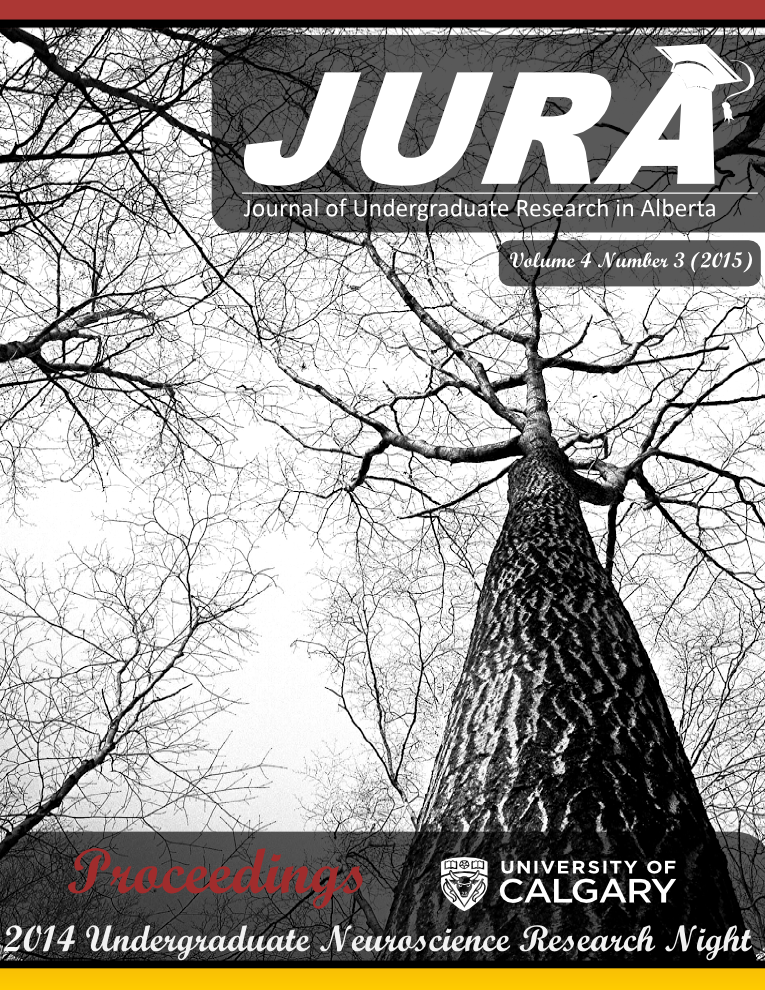PERI-INFARCT SUSCEPTIBILITY OF WHITE MATTER COMPARED TO GRAY MATTER FOLLOWING ISCHEMIC STROKE
Keywords:
Stroke, Photothrombosis, Ischemia, White Matter, Peri-InfarctAbstract
Stroke is the second largest cause of death worldwide, with 80% being ischemic. Cells with no blood supply die via necrosis, forming the ischemic core. Adjacent to the ischemic core is an area of reduced blood flow, called the peri-infarct zone, which may have distinct injury/recovery processes. Thus, the study of the peri-infarct zone may improve stroke treatment. Neonatal white matter has a higher susceptibility to injury from ischemia than gray matter in rats. Therefore, white matter may require different treatment than gray matter. The purpose of the study was to discover whether peri-infarct white matter in adult rats is more susceptible than gray matter to ischemic changes. The hypothesis is that adult rat peri-infarct white matter is more susceptible to ischemic changes than gray matter following a stroke.
Rose Bengal was injected into 22 Wistar adult rats and exposed to white light, causing blood coagulation. The rat brains were scanned by an MR machine and acquired as T2 weighted sequence images. Slices were visually assessed to determine anterior/posterior boundaries of peri-infarct zone and had three regions measured on five major slices. The T2 values were expressed as percentages of their respective controls. Histology slides of the brains were stained with Luxol Fast Blue and H&E. The three previously measured regions were visually assessed on the histology and scored YES or NO for signs of tissue injury/changes in myelination.
Two general patterns of T2 values appeared, separated into two groups: posterior increased (PI) and core centered (CC). When comparing white matter T2 values between the two groups, posterior peri-infarct slices were significantly greater than anterior peri-infarct slices. There was a significant difference between white matter and upper cortex gray matter in posterior mild lesion slices of the PI group (p value = 0.031). The myelination score was NO for all central slices. 4/5 of the animals of the PI group had obvious signs of tissue injury at the deep cortex central lesion slice. There were no signs of injury in the CC group. There was, however, high correlation between deep cortex T2 values and H&E tissue injury rankings (p = 2.0 x 10-7). Meanwhile, white matter T2 values and H&E scores were not significant (p = 0.182).
At posterior slices remote from the ischemic core, signs of ischemic T2changes of white matter was greater than gray matter in the PI group. These changes were not observed in the CC group. Comparing central slice of PI and CC groups showed greater T2 responses occurred in the PI group than in the CC group, suggesting a more severe ischemic insult occurred in animals of the PI group. However, posterior peri-infarct white matter did not show greater signs of tissue injury detectable by H&E than gray matter. The enhanced T2 ischemic changes in posterior peri-infarct white matter appears to be due to reasons other than tissue injury detectable by H&E staining, such as cerebral edema and microscopic axonal injury. In conclusion, the data supports that white matter in adult rats can be more susceptible than gray matter to peri-infarct ischemic changes detected in the form of T2 changes, specifically posterior to the ischemic lesion. Increased T2 changes are a reflection of ischemic changes that could benefit from novel treatments targeted at white matter.
Downloads
Downloads
Additional Files
Published
Issue
Section
License
Authors retain all rights to their research work. Articles may be submitted to and accepted in other journals subsequent to publishing in JURA. Our only condition is that articles cannot be used in another undergraduate journal. Authors must be aware, however, that professional journals may refuse articles submitted or accepted elsewhere—JURA included.


